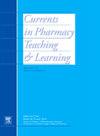Using simulation stethoscopes to support physical exam skill development in health professionals education: A scoping review of educational applications and outcomes
IF 1.4
Q3 EDUCATION, SCIENTIFIC DISCIPLINES
引用次数: 0
Abstract
Background
Developing physical assessment skills relies on practicing with healthy peer learners and standardized patients or simulating pathologic sounds with mannequins. Simulation stethoscopes bridges both by offering learners an opportunity to communicate with a live patient and hear pathologic sounds.
Objectives
This scoping review aims to map the use of simulation stethoscopes in health professions, describe how they are integrated into training, and identify further research opportunities.
Methods
We conducted a scoping review following the Arksey and O'Malley framework with advancements by Levac and colleagues. We searched EMBASE, MEDLINE, Google Scholar, and bibliographies of included studies. Eligible studies involved simulation stethoscopes used in health professions education. Two reviewers independently screened articles, extracted data, and mapped outcomes. Study characteristics, populations, learning objectives, disease states, and simulation design were analyzed descriptively.
Results
Six studies were included. These studies were published between 2011 and 2023 and conducted in the USA (n = 5) and UK (n = 1). Study populations included pharmacy students, paramedics, medical students, physician residents, and physiotherapists. Simulation stethoscopes were used during respiratory, cardiovascular, and acute paramedic scenarios on standardized patients, peer learners, and mannequins. Mapped outcomes included physical exam knowledge, technique, interpretation of findings, confidence, fidelity, and simulation evaluation.
Implications
Studies demonstrated the flexible use of simulation stethoscopes among healthcare professions by providing high realism with a focus on skills development and learner confidence. Further research on the role of simulation stethoscopes in teaching physical assessment, including their benefits and implications for student learning and confidence, especially among pharmacy professionals, would be beneficial.
使用模拟听诊器支持健康专业人员教育中的体检技能发展:教育应用和结果的范围审查
发展身体评估技能依赖于与健康的同伴学习者和标准化的患者一起练习,或者用人体模型模拟病理声音。模拟听诊器通过为学习者提供与活体患者交流和听到病理声音的机会来架起桥梁。目的:本综述旨在绘制模拟听诊器在卫生专业中的使用情况,描述如何将其整合到培训中,并确定进一步的研究机会。方法:我们根据Arksey和O’malley框架进行了范围审查,该框架由Levac及其同事进行了改进。我们检索了EMBASE、MEDLINE、谷歌Scholar和纳入研究的参考书目。符合条件的研究包括在卫生专业教育中使用的模拟听诊器。两位审稿人独立筛选文章,提取数据并绘制结果图。描述性地分析了研究特征、人群、学习目标、疾病状态和模拟设计。结果共纳入6项研究。这些研究发表于2011年至2023年之间,分别在美国(n = 5)和英国(n = 1)进行。研究人群包括药学学生、护理人员、医学生、住院医师和物理治疗师。模拟听诊器在呼吸、心血管和急性护理情景中用于标准化患者、同伴学习者和人体模型。绘制的结果包括体检知识、技术、结果解释、置信度、保真度和模拟评估。研究表明,模拟听诊器在医疗保健专业中灵活使用,提供高真实感,重点是技能发展和学习者信心。进一步研究模拟听诊器在身体评估教学中的作用,包括其对学生学习和信心的好处和影响,特别是对药学专业人员,将是有益的。
本文章由计算机程序翻译,如有差异,请以英文原文为准。
求助全文
约1分钟内获得全文
求助全文
来源期刊

Currents in Pharmacy Teaching and Learning
EDUCATION, SCIENTIFIC DISCIPLINES-
CiteScore
2.10
自引率
16.70%
发文量
192
 求助内容:
求助内容: 应助结果提醒方式:
应助结果提醒方式:


